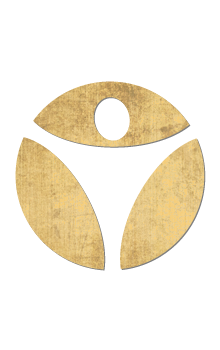How to Start an At-Home Yoga Practice for Beginners
- Updated on: December 16, 2021

How Can I Start Learning Yoga at Home? – What are the Basic Steps to do Yoga for a Beginner?
Did you know that doing yoga from home is one of the most popular ways to practice? Are you ready to start your yoga practice but do not want to have to go to a gym or a studio? Starting your yoga practice can be done from the comfort of your own home. In fact, one study even found that sixty-seven percent of people practicing yoga do so from their home! (Grate, 2020)
Not only does this make yoga more accessible for everyone, but it also allows the practice to be less intimidating for those who are nervous to get started. If you are careful, it is possible and safe to practice yoga for beginners at home.
So, if you are ready to begin your at home practice, where should you start?
- Pick Your Mat- Make sure you have a good mat that can properly support you. You will want one that is not too thick and not too thin as well as easy to clean. If your mat is too thick, it makes it harder to balance and puts pressure in the ankles. If your mat is too thin, you will feel more pressure on the joints when you are down on the mat. Do you want to check out our awesome cork yoga mats? Click here!
- Decide What Kind of Practice is Right For You- There are so many different kinds of yoga out there. You might be looking for a gentle practice, like yin or restorative, or you might want a yoga practice that involves more movement, such as vinyasa or hatha yoga. There is no one kind of yoga that will be best for everyone. You might even choose a chair yoga class if you need more support. The right answer depends on what you are looking for in a class.
- Choose Your Class- Finally, the next step is to find the right online class for you. This will depend on what type of practice you prefer and on how long you want your class to be. If you want to start out with a quick, short practice, you might try some youtube videos. If you want a longer practice, there are so many online to checkout. You can see the practices we offer by clicking here! You can also check out some short, free practices that we post on youtube by clicking here.
What is the Best Yoga for Beginners?
Gentle Yoga– If you are looking for a gentle yoga practice, there are a few for you to choose from. The most popular types of gentle yoga are restorative and yin yoga. Restorative yoga is great for those who are healing from injuries or just need to relax. Yin yoga involves deeper stretches that affect the soft tissues of the body, making them more flexible. Both types of practices are done on the mat. In addition, you can also try out a gentle or slow moving vinyasa flow if you want a bit more movement but not a lot. If you want a class that is gentle with a bit more movement, you might try hatha yoga. Hatha yoga classes can vary depending on the instructor, but most are slower paced and use multiple types of yoga in one class. Finally, chair yoga is great for those who need a gentle practice with a bit more support.
Flow Classes- If you are looking for a class that offers more movement, a vinyasa practice is one of the best ones to try. Vinyasa yoga involves linking poses with the breath. For example, you might inhale to reach your arms up to the sky and then exhale to reach towards your toes. By linking movement with the breath, you are able to flow from one pose to the next, creating a dynamic movement.
Repetition- If you are looking for a class that offers more repetition, you might try out ashtanga yoga. This practice is great for those who want to be able to repeat the same movements over and over in order to better learn the poses. Ashtanga yoga involves practicing specific sequences that are repeated again and again.
Exercise- If you are looking for a yoga class that offers more exercise and muscle strength, you should probably try out a power yoga class. Power yoga is a more intense vinyasa practice, but it involves holding certain poses for longer and engaging the muscles. This is a great way to make you sweat and help you get stronger.
Is Hatha Yoga for Beginners?
Hatha yoga is technically an umbrella term that encompasses multiple styles of yoga within it. Vinyasa, power, ashtanga, yin, and restorative yoga can all be seen under this umbrella in addition to many other forms of yoga as well. This means that any class involving postures and deep breathing can technically be a hatha yoga practice. However, many classes are labeled as hatha when they involve a mix of practices. Often, hatha yoga tends to be rather gentle and touches upon different styles of yoga within its practice. Due to this, hatha yoga can be a great introduction for those who have never practiced before.
In a hatha practice, you will often learn some of the most common yoga postures along with deep breathing, meditation, and mindfulness.
So, is hatha yoga meant for beginners? Is it a good option for those who are just starting out their practice?
The answer completely depends on the person. The truth is that hatha yoga might be a great place to start for some while others might do better with a more gentle practice. Or, perhaps, hatha yoga might not have enough movement for those who are looking for a more intense practice.
If you are looking for a class that involves standing poses but not as much movement as vinyasa, then hatha might be a great choice for you. If you are a beginner to yoga, you might do very well with hatha. It also might be too intense. It depends on each individual person, but overall, hatha yoga can be great for many beginners.
Which Type of Yoga Should a Beginner Try First?
So, which type of yoga is best for a beginner? Are some practices better than others?
The best type of yoga for beginners will usually be a form of a gentle practice. Therefore, restorative, yin, hatha, or even a gentle vinyasa flow are all reasonable options for someone just beginning a yoga practice.
That being said, of all of the choices above, hatha yoga is probably the best for the majority of beginners since it encompasses multiple types of practices in one while still being rather gentle. It is also great to try first if you are not sure where to begin as it will give you an idea of what a practice can be like without forcing you to choose just one type of yoga.
What are Some Tips for Practicing Yoga at Home?
- Find a Quiet Space- Finding the right space to practice is important. To start, you should always make sure that you have a nice quiet area to do yoga where you will not be interrupted. Having someone walk in or distract you during a yoga class can pull you from your practice.
- Choose the Right Surface- Next, notice what type of flooring you are practicing on. If you are on the hardwood, a thicker mat may be better. For practicing on carpet, finding a mat that will not slide is important. Just find the best place for your practice, whether it is in your basement or outside in your backyard.
- Pick Your Music- You may not always need to choose background music. Some practices include it in their videos where others do not have any music in them. If you find that the class you are following does not include music, and if you want to have some to move to, pick a nice, relaxing playlist that works best for you.
- Get Your Props Ready- When you first start your yoga practice, having props handy can be very helpful. Many people– even those who have been practicing for years– need a bit of support when doing yoga. Blocks, straps, and even bolsters can be useful when practicing. If you are not sure which props to get, and how many, it is recommended to have one strap and two blocks. If being on the mat is too difficult for you, there are chair yoga options as well. Chairs can also be used as props.
What YouTube Channels are Good for a Beginner to Learn Yoga?
There are so many youtube channels out there that offer yoga videos. We recommend finding a class and an instructor that resonates the most with you.
Beginner’s Yoga- Look for a youtube channel that offers beginner’s yoga. In fact, finding a video that is labeled for beginners is a great way to ensure that the practice is best for those just starting out.
Types of Gentle Yoga- If you are having trouble finding a beginner’s class that you really like, you can also look for a class that is labeled as gentle. You can even search for classes based on the specific type of yoga you are looking for. If you want a gentle class, maybe try searching for restorative yoga practices.
Shorter Classes- For beginners, having mini practices can be a great way to start doing yoga without having to continue for a full hour-long class. This is also a great way to try out different types of yoga for a few minutes at a time.
Full-Length Classes- Some youtube channels will even offer free full-length yoga classes. If this feels like what you are looking for, then you can absolutely try an hour-long practice at home. It is recommended to find a gentle practice to start with if you are jumping right into an hour-long class.
Body By Yoga’s youtube channel offers many different types of videos. We have beginner’s classes, gentle classes, short classes, and even some free full-length classes. If you are looking for chair yoga, we’ve got you covered. If you want to try out some power yoga, we can help you with that too. We have many different classes and resources to choose from. Check out our youtube channel here!
How Does One Learn Yoga by Oneself?
When starting a yoga practice from home, you are basically learning yoga on your own. Did you know there are many different kinds of ways to learn yoga by yourself?
Videos and Tutorials- As you already know, there are many yoga videos online that can guide you and your new practice. While there are tons of classes to choose from, did you know that there are also short tutorials on specific poses and routines? You do not have to follow just one class. You can always try out different poses and videos to learn more about which practices work best for you.
Books- There are also a lot of yoga books out there. These are great resources and often contain a ton of great information for beginner yogis. When it comes to yoga books, there are so many topics to choose from. Whether you are reading about poses, the anatomy behind yoga, or even yoga history, books can be super helpful.
Blogs- Nowadays, blogs are extremely popular and many yoga blogs are gaining readers. Blogs are often free and contain great information on specific topics. They might also be able to answer whatever questions you might have with just a quick internet search.
Is it Better to do Yoga in a Class or Online for a Beginner?
For beginners, there are pros and cons for both practicing at home and practicing in a class. Let’s take a look at each option and what they each have to offer.
At Home- When you practice at home, you have a completely quiet space. This can be helpful for those who have trouble focusing when a lot is going on. At home, you can rewind a practice if you missed something or if you need to hear the directions again. You also have more options for exactly which class to pick and which teacher you click with the most. You have more of an ability to take your time and go at your own pace when you are in your own space, and you will not have to worry about packing up at the end of class and leaving right away. You have the option to stay in meditation for longer if you prefer. However, when you are at home, you will not be able to ask questions before class or talk to your instructor about your personal history and ailments. While modifications will often be included in videos, there is no instructor keeping an eye on you to offer you different choices if needed. In addition, you may only have specific props at home whereas studios will have much more to choose from.
In a Class- Practicing in a studio or a class setting can be great for those who like to have a bit more support. If you like to ask questions before or after practice, being in a class might be more helpful for you. In addition, when you are in a classroom, you have the teacher’s support as well as the option to be adjusted in a pose. There are also usually a variety of props to choose from as well as mats that you can use if you have forgotten your own, or if you do not have one yet. Some downsides to practicing in a studio are that you cannot go back if you missed something, and you also are not in your own space. The room may not be as quiet, and balancing poses might be a bit more difficult while seeing others moving around during your practice.
As you can see, practicing at home and practicing in a classroom both have pros and cons, and the real decision will depend on what you prefer.
Is it Safe for a Beginner to Try Yoga at Home?
So, with all of this in mind, is it safe for a beginner to practice yoga at home on their own?
The answer is yes, as long as you are careful. Just like with any other exercise, whether you are a beginner or not, you have to take your time and not rush into anything. It is important to make sure that the practice you are doing is meant for beginners, or at least that the practice you choose is within a level you are capable of doing.
If you make unsafe choices, then practicing at home is not safe. If you make safe choices, it will be.
Take your time going into each pose and never force a stretch or posture that you are not capable of doing. Use props and be aware of modifications if a pose is too difficult for you. If you have trouble balancing or standing during a practice, chair yoga might be a safer option.
The bottom line is that yoga can be safe if you practice it safely. If you make unsafe choices, then it will not be. If you feel you are not sure how to safely practice on your own, having some guidance, or practicing in a studio, might be better. If you are able to safely practice at home, then feel free to do so. Just be careful.
What is it like to Start Yoga as a Beginner?
Starting yoga as a beginner can be both exciting and anxiety-inducing. If you have never practiced before, certain movements might feel foreign, and the concept of linking poses with the breath may be a completely new experience.
Feeling Sore- Do not be surprised if you are a little sore the next day. Your body is not yet used to these particular poses, and when you first stretch out muscles that do not often get much movement, it is normal to be a bit sore as the muscles heal.
Learning Your Flexibility- Do not worry about how flexible you are. Yoga is all about learning your level of flexibility and working within it. If you have to force yourself into a pose that you are not flexible enough to do, ease out of it and try using props or a modification instead. Some poses will be more difficult at first, and that is okay.
Discovering Your Balance- When you are not used to practicing balance, certain poses might seem more difficult at first. Take your time coming into balancing poses, and if something is too hard to do, try out a modification of the pose. You might find that you are not as balanced as you were hoping to be, and this is all part of increasing your balance. It is okay to nor be perfectly balanced right away. This takes time and practice. Each time you practice a pose, you will improve a little bit more.
Emotions- You might feel emotions coming up while practicing. The body stores strong emotions on a somatic level, and sometimes, stretching the body out can release old feelings that have been stored for a while. You might feel exhilarated after your first class. You also might feel more relaxed. This will be different for everybody. Try not to judge your feelings, and just be aware of them. This is how we learn and grow and how we continue to better ourselves.
What are Some Simple Yoga Poses for Beginners?
Child’s Pose- Child’s Pose is a very relaxing and restorative yoga pose. To do child’s pose, start on the hands and knees on your mat. If your knees are sore, or if you have too much pressure in them, feel free to roll up the edge of your mat beneath them or use a cushion/ pad here. Next, press your hips back towards your heels, extending your arms out in front of you. You can also bring your knees out to the sides if you choose, and if having your arms up overhead is uncomfortable, try bringing them down by your sides instead. Rest your forehead on the mat, and if you can not quite reach it down completely, you can either use a block or fold your hands beneath it. Hold this pose for at least thirty seconds or as long as you would like. Breathe here and allow yourself a moment to just be. Whenever you are ready, inhale to come back up to your hands and knees.
Cat/Cow- Start on your hands and knees, using a cushion or rolled mat under your knees if they are sore. As you inhale, arch your back and look up to the sky. As you exhale, round your back, tucking your chin to your chest. Continue rolling through these two poses as you work with your breath. If doing this pose on the mat is too intense, you can try it while sitting in a chair. To do this pose in a chair, place your hands on your thighs and inhale to arch your back, exhaling to round it. Repeat this as many times as you would like or for at least five to ten breaths.
Mountain Pose- This pose is very easy to do, but it can be especially useful for those just starting a yoga practice. To do mountain pose, begin standing up and step your feet about hip-width distance apart. Hug your core in, lifting through the top of your head as you find all four corners of your feet, pressing them down into the earth. Allow your shoulders to relax down your back and keep an open heart. Tuck your tailbone under and engage the muscles of the legs. Rest your eye on an unmoving point of focus and take multiple deep breaths.
Forward Fold– From mountain pose, inhale your arms up to the sky, and then exhale to fold forwards. Hinge at the hips and allow your upper body to hang down as you engage the muscles of the lower body. Never force your hands down to your toes. If they easily reach, great. If not, then just let your arms hang where they are. You also have the option to grab opposite elbows here and gently rock the upper body side to side as you continue to hinge from the hips. You can always use a strap here if you would like by looping up both feet and holding onto both ends of the strap as you gently, carefully pull yourself forwards. You can also use two blocks here to rest your hands on if you would like, bringing the ground closer to you. Finally, if standing up for this pose is too much, you can do this while sitting in a chair. The only difference is that you will be sitting down as you fold forwards. Whichever version of this pose you choose, take at least five to ten breaths here.
Sphinx Pose (For Beginners with Wrist Pain)- To do this pose, start on your belly with your forearms flat on the ground by your sides and your elbows tucked in. Keeping your muscles engaged, gently press into the forearms, lifting the upper body from the ground, and using the muscle of the spine and core to hold you in place. Breathe deeply here, opening through the heart. If this pose is too much for you, feel free to use a block under each arm for more support. An alternative to this pose is cobra pose with is done by placing the hands on the ground instead of the forearms and lifting up just as much as you can using your back and core muscles.

What are the Top Yoga Poses for Beginners and Their Benefits?
Strengthening and Stretching- Downward Facing Dog
Starting on your hands and knees, tuck your toes and press into your hands and feet to lift your knees up, pressing your hips up and back. Keep your spine long, even if you need to bend your knees here. If you find yourself rounding your back, adjust the pose, bending further into your knees. If you are easily able to keep your spine long here, feel free to reach your heels down towards the ground, but never force them. If you need a block between the knees here for better traction, feel free to use one. Hold this pose for at least five deep breaths or for as long as you would like. This pose is great for strengthening the muscles of the legs and arms while engaging the core and back muscles. This is also a wonderful pose for correcting and adjusting posture.
A Gentle Hip Opener- Seated Wide Leg Forward Fold
For a fun and gentle hip opener, you can try wide leg forward fold. To do this pose, start out sitting on your mat, and bring your feet as far out to the sides as feels comfortable for you. Flex your feet to protect your hamstrings at all times.
If you cannot straighten the legs, bring them closer towards one another until you comfortably can. You can also place blocks beneath the knees here if you still cannot straighten the legs. As you inhale, sit up tall, aligning the spine, as you exhale, fold forwards between the legs as far as you can without rounding the back. If you feel any tension in the hamstrings, try easing out of the pose a little bit. You can bring your hands or forearms to the ground depending on what feels best here. You can also use blocks here to bring your hands to, or you can fold over a yoga bolster to support the upper body instead. If you absolutely cannot do this pose while sitting on the mat, feel free to try it in a chair. To do this pose in a chair, bring your feet out to the sides and fold forward between them. Whatever version of this pose that you choose, hold this for at least ten breaths or longer if possible.
Stretching the Sides of the Body- Side Stretch or Crescent Moon Pose
A great pose for stretching out the sides of the body would be crescent moon pose, also known as side stretch. This pose is done by standing in mountain pose and bringing the hands up overhead and together on an inhale. You can also hold onto a strap here with both hands or hold onto a block between the hands if that is easier. As you exhale, lean over towards one side, engaging the core, and keeping the opposite side of the body nice and long. Gently rotate to look up under your arm towards the sky here. After a few breaths, inhale to come back up to center, and exhale to come over to the other side.
You can also do this pose sitting in a chair but keeping the arms the same. If this is still too much, instead try bringing just one arm up and over while reaching the opposite arm down and away. You would then repeat the same thing on the other side.
A Gentle Backbend and Glute Strengthener- Bridge Pose
To do this pose, start on your back with your arms down by your sides and your knees bent. Keep your feet flat on the ground and then inhale to bring your hips up and back, and exhale to press down into the hands to stabilize you here. If you would prefer, feel free to bring your arms under you and together for more support. You can also choose to put a block, a bolster, or a rolled pillow under the glutes here to hold you up instead if that feels best for you. Hold this pose for at least ten breaths and then exhale to come down. This is a great pose for strengthening the glutes and the core while giving you a nice stretch in the back of the body.
Gentle Twisting- Reclining Twist
This is one of the more relaxing yoga poses, but it still offers the benefits of a twist. Yoga twists are great for draining your lymph nodes and releasing toxins from the body. For this reason, they can even sometimes strengthen your immune system. You can do this pose by starting on your back with your knees bent and your feet flat on the ground. From here, bring both arms out to the sides and then drop your knees over to the right as you turn your head to the left. It is important to keep both shoulders flat on the ground here, so if you have trouble doing so, ease out of the pose a bit, bringing the knees back up. Hold this pose here, relaxing and taking deep breaths, for at least a minute. When you are ready, inhale to bring your knees and your head back to center, and exhale to drop them over to the other side.
Body By Yoga Resources for Beginners
Are you ready to start your yoga practice but need some tips and advice? If so, click here to check out our resources for beginner yogis. We offer many free articles, videos, tutorials, and so much more to get you started on your yoga journey!
Our resources are aimed to help you safely start your yoga practice while having answers to your questions right in front of you. Need a pose broken down? We’ve got you covered. Want to learn some more modifications to a tougher pose? We have those too.
Check out all of the amazing resources we have to offer so that we can help you get started today.
Best Body By Yoga Practices for Beginners
We offer so many practices online for those looking to do yoga at home. You can look through our different yoga courses and find the best ones for you. For beginners, we recommend checking out our Yoga Boost program. This practice involves four beginner yoga workouts and it is specifically designed for those who do not normally do yoga. You can check out our Yoga Boost program by clicking here!

If you are a beginner looking for a chair yoga class, our Yoga Start class would be a great option for you. This twenty-five minute yoga practice is meant for absolute beginners and involves using a chair to make poses more accessible to people of all abilities. You can try out our Yoga Start class by clicking here.
Another great program that we offer for beginners is called Yoga Fix. This program involves a complete five day system of twenty minute yoga workouts. This practice is great for anyone who is brand new to yoga and looking for some guidance for their practice. In addition, our Yoga Fix system can help you reduce pain, increase flexibility, lose weight, and so much more! Are you ready to get started? You can check out our Yoga Fix program by clicking here.
Reference: Grate, R. (2020, February 11). Yoga statistics: Surprising data on the growth of yoga [infographic] – eventbrite. Eventbrite US Blog. Retrieved October 5, 2021, from https://www.eventbrite.com/blog/yoga-statistics-demographics-market-growth-trends-ds00/.
Recent Posts
Categories
Related Articles
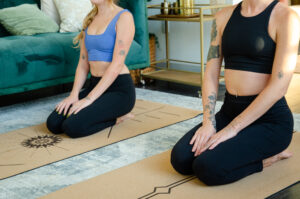
Breathing technique to improve your yoga practice

Restorative Yoga Stretches
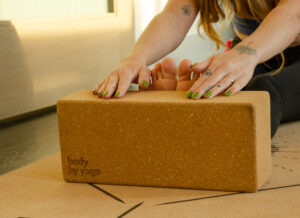
Benefits of yoga before bed
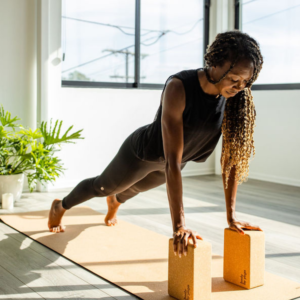
Taking the next step to more challenging yoga
Related Articles
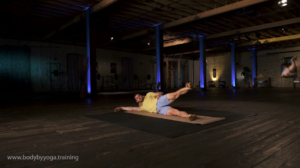
Stretching and Strengthening your hips
In this workout we start slow to warm up your hips. Utilizing low impact workouts like this can be important for beginners and yoga veterans
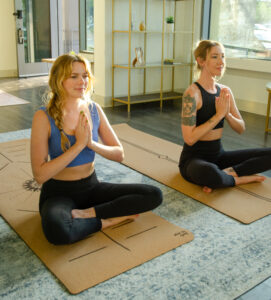
Hatha vs Power yoga
We’ve created our own unique style of slow burn power yoga that combines Hatha yoga, power yoga, bodyweight exercises and physical therapy. This way in

The importance of maintaining correct alignment
Everything in your body is connected, so when one muscle isnt aligned properly it can be a slippery slope to injury. Building a solid foundation
